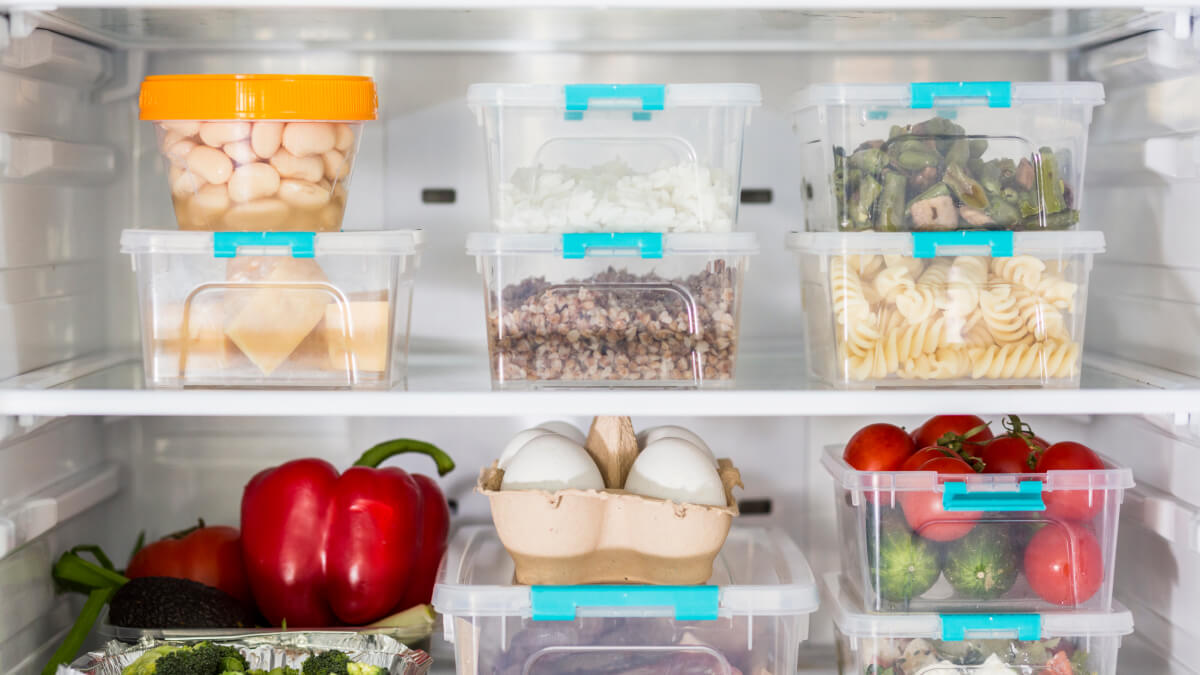It doesn’t matter if you have a big fridge with tons of room, or a tiny one that barely fits anything. The same principles of good organization apply to both. The most important thing is to never stop refining your fridge organization routine until you’ve found the setup that works best for you and your family.
Here’s a simple diagram of the fridge. It doesn’t look like much, but it can hide a lot of junk.
First, make sure you have enough shelves and drawers for everything you want to store in there. Don’t overload the fridge! If you don’t, you’re likely to find yourself going out to the garage or pantry for more storage all the time.
This means several trips back and forth across the kitchen throughout each day, which wastes energy (and is miserable!).
Next, store your items in a logical order. Items you use and consume most often should be closest to the front, while items that are used less often should be stored in the back.
The goal is to reduce trips to the back, since they are a pain in the neck and an energy hog. Most refrigerators have more room in the middle than on either end, so put things you use most often right at your fingertips.
Another system I like to use is to store the most-used items at the bottom, the second-most used in the middle, and less-used items at the top. This means that you don’t have to reach across the top of your refrigerator (with whatever is there) to get something you need.
It also ensures that every item in your fridge has a spot it can be found easily and quickly.
Those are just a few tips for storing things well in your fridge. You may have good organizational habits all your own, so go ahead and use those! No matter what you’re doing, though, make sure you always leave some room on the shelves for fresh food to fit (at least 1/3 of it, ideally). You shouldn’t be cramming stuff into every nook and cranny in there.
If you’re a renter or don’t have control over how your fridge is set up, here are some additional tips.
Prevent food from being damaged by temperature or moisture. Even if you have the most perfectly organized fridge in the world, if it’s not climate-controlled properly it will still go bad.
Make sure your fridge is set at 40 degrees F or below and that you don’t keep vegetables in there next to meat (unless they’re stored in a separate drawer).
Keep chopping boards, knives and other sharp utensils handy and visible. If you have drawers, use them to store your cutting boards. I like to lay a damp towel over my cutting board to keep it clean, which also helps keep it from sliding around.
Use the door as often as you can. If you don’t leave your eggs on the door, try putting them in a basket inside your fridge or on a shelf. If you have an empty door, keep something like a pitcher there to hold smaller items.
Stay organized. The best thing about organization is that it makes your life easier, and when things are easy, you feel happy and proud of yourself. So take pride in your fridge!
See what you can improve next time you open it. What’s the first thing you reach for when you open the fridge? Do you have everything there by sight, and if not, where do you usually put it? If there’s any room for improvement, it’s probably in your organization.
Next, develop your own system for organizing food. You don’t have to use the same system as anyone else, but you should always create a systematic approach that keeps you from buying too much of any one food and ensures that you know how much of each item is in stock.
To know how much food you should have in stock, calculate how much you eat over an average week. If you have little ones, you might use their appetites as a guide. If not, try keeping a food diary for one week to determine your consumption patterns.
This chart shows the USDA’s recommendations for perishable foods in the refrigerator and freezer. It also gives suggestions on what types of containers to use and how long to store each type of food.
